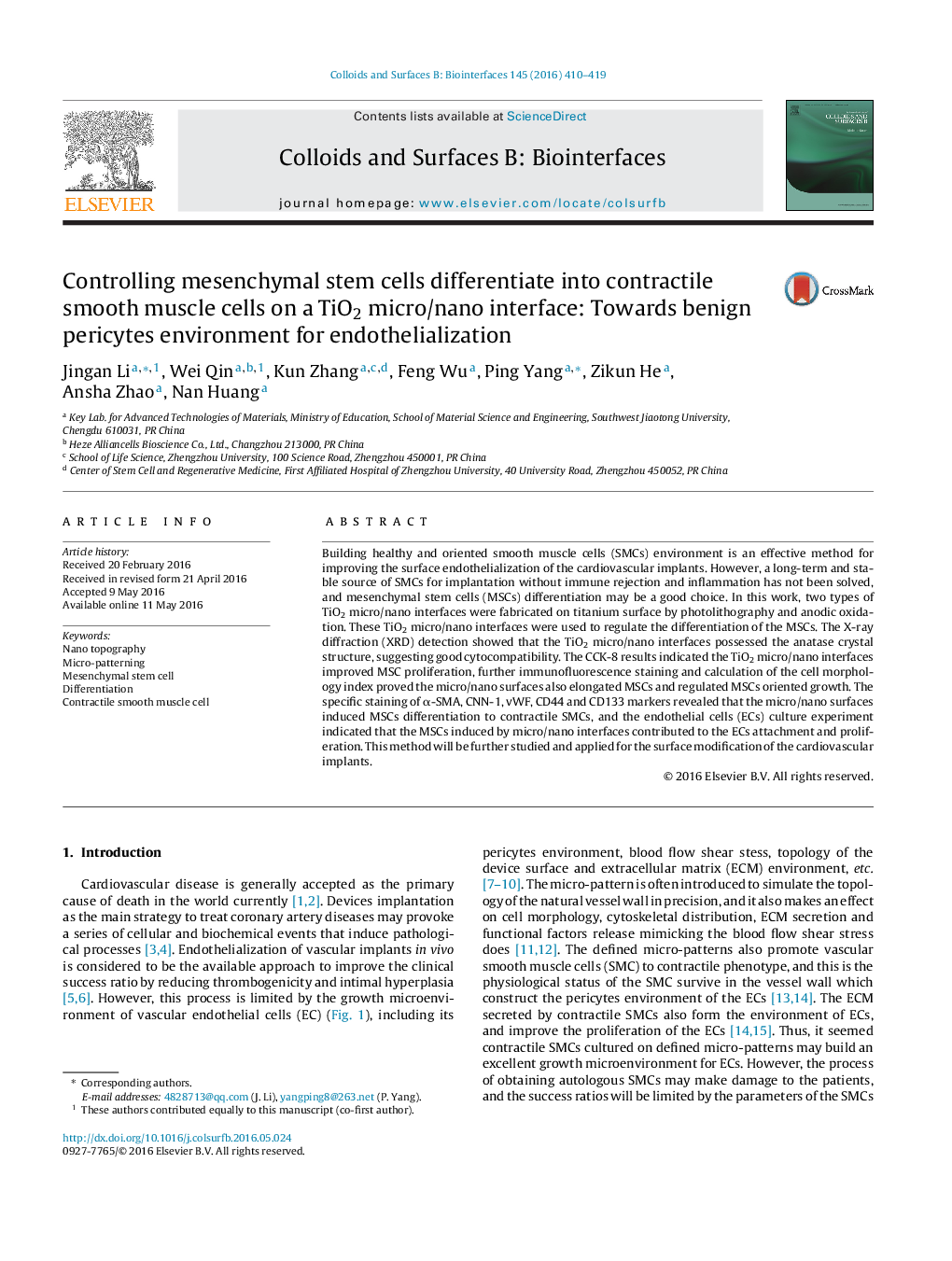| کد مقاله | کد نشریه | سال انتشار | مقاله انگلیسی | نسخه تمام متن |
|---|---|---|---|---|
| 598964 | 1454259 | 2016 | 10 صفحه PDF | دانلود رایگان |

• Two types of TiO2 micro/nano interfaces were fabricated on titanium substrates.
• A cell culture method defined “FMC” was applied to keep the MSCs contacting with the micro/nano interfaces directly.
• The micro/nano interfaces induced MSCs differentiate into contractile SMCs.
• The MSCs micro/nano interfaces may be useful for constructing the pericytes environment of the ECs on the cardiovascular devices.
Building healthy and oriented smooth muscle cells (SMCs) environment is an effective method for improving the surface endothelialization of the cardiovascular implants. However, a long-term and stable source of SMCs for implantation without immune rejection and inflammation has not been solved, and mesenchymal stem cells (MSCs) differentiation may be a good choice. In this work, two types of TiO2 micro/nano interfaces were fabricated on titanium surface by photolithography and anodic oxidation. These TiO2 micro/nano interfaces were used to regulate the differentiation of the MSCs. The X-ray diffraction (XRD) detection showed that the TiO2 micro/nano interfaces possessed the anatase crystal structure, suggesting good cytocompatibility. The CCK-8 results indicated the TiO2 micro/nano interfaces improved MSC proliferation, further immunofluorescence staining and calculation of the cell morphology index proved the micro/nano surfaces also elongated MSCs and regulated MSCs oriented growth. The specific staining of α-SMA, CNN-1, vWF, CD44 and CD133 markers revealed that the micro/nano surfaces induced MSCs differentiation to contractile SMCs, and the endothelial cells (ECs) culture experiment indicated that the MSCs induced by micro/nano interfaces contributed to the ECs attachment and proliferation. This method will be further studied and applied for the surface modification of the cardiovascular implants.
Novel TiO2 micro/nano interfaces which could induce mesenchymal stem cells differentiate into contractile smooth muscle cells without introducing any biological factors.Figure optionsDownload as PowerPoint slide
Journal: Colloids and Surfaces B: Biointerfaces - Volume 145, 1 September 2016, Pages 410–419